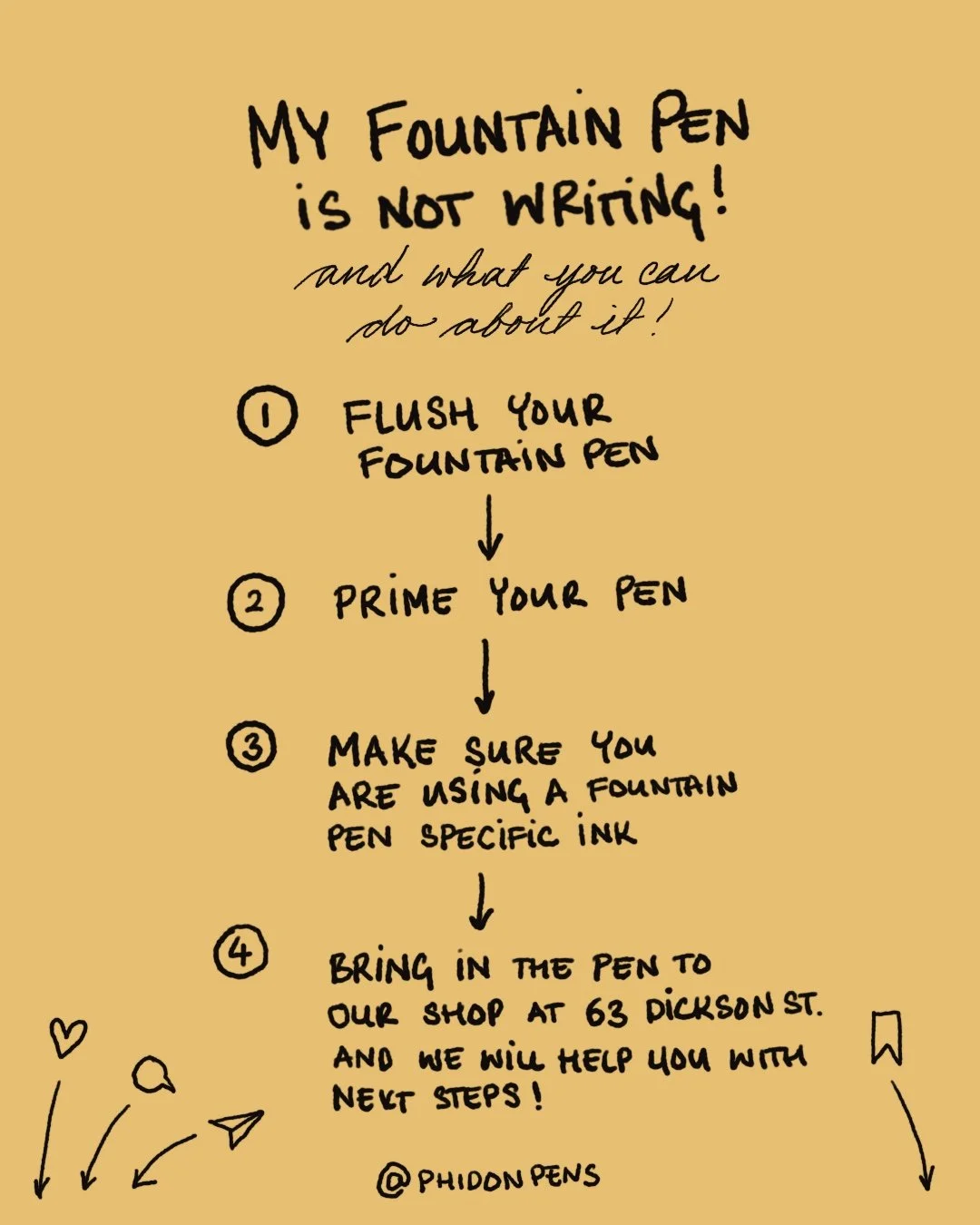Help! My Fountain Pen Is Not Writing!
We’ve all been there. Sometimes, a previously well functioning fountain pen just suddenly starts misbehaving. But fear not! If your fountain pen is not writing, chances are that it just needs a good clean. And if not, we’ll go over a few extra tips in this blog post to get your fountain pen writing again.
If you have ever had a fountain pen stop writing for you, be sure to save this post for future reference!
Step 1 - Flush your fountain pen
Remove the cartridge or converter from your fountain pen and hold the nib feed under the tap until the water runs clear. Make sure to use cool or lukewarm water. If you have a piston filler, flush it by cycling water (instead of ink) through the pen until it runs clear. Let the pen dry fully before filling with fresh ink.
If you are encountering more stubborn clogs in your pen, give the nib section an overnight soak in a solution of 1 part dish soap to 10 parts water. Avoid using harsh chemicals such as bleach or alcohol, as these will very likely cause permanent damage to your pen.
Step 2 - Prime your fountain pen
Ink usually takes a few minutes to thoroughly saturate the feed when you refill your pen. If your pen is still not writing after the flush we recommended in the previous step, you can speed up ink delivery to the feed by priming the pen. If you are using a cartridge, gently press the cartridge to persuade the ink into the feed. If you are using a converter, turn the converter handle a little bit to push a little ink into the feed. This will get the pen writing quickly.
Step 3 - Make sure you are using a fountain pen specific ink
Not all inks are created equal. For the best performance, you should always use an ink designed to be used with fountain pens. India Ink, for example, is not suitable for fountain pens and will permanently clog up the feed. Most fountain pen inks are dye-based inks, which require minimal care and maintenance. There are a few inks on the market that are pigment-based, but designed for use with fountain pens. When using pigment-based fountain pen inks, be sure to avoid leaving the ink in the pen unused for an extended period of time, as they can more easily create clogs that are difficult to clean out.
You can find more information about inks we recommend for use with fountain pens on our blog.
Step 4 - Bring in the pen to our shop!
If trouble persists with your fountain pen, bring it into the shop and let our staff have a look at it. We will help you diagnose the problem and present you with some options. Whether that is servicing your pen for you, sending it back to the manufacturer for repair*, or referring you for repair or even restoration by a third party nibsmith, we’ll do our best to get your pen working again. But don’t be alarmed, 85% of the time a fountain pen that is refusing to write just needs a good clean.
*Please note that sending a pen back to the manufacturer is only possible if you have purchased the pen from us. Shipping and handling charges may apply.


